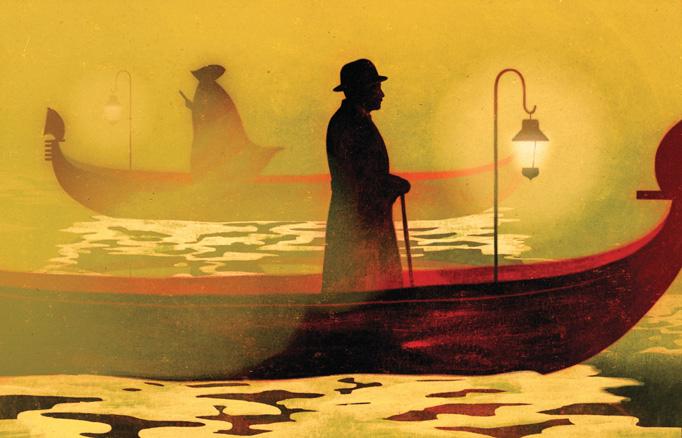THEY CAME BY NIGHT

Published in 1969, Agatha Christie’s “Hallowe’en Party” is largely set in the fictional town of Woodleigh Common, “an ordinary sort of place,” thirty or forty miles from London. Thanks to the director Kenneth Branagh and his screenwriter, Michael Green, the book has become a new film, “A Haunting in Venice,” and the action has shifted to Italy in 1947. Now, that’s an adaptation—a bolder metamorphosis than anything essayed by Branagh and Green in “Murder on the Orient Express” (2017) or “Death on the Nile” (2022). I’m already looking forward to their next reworking of Christie: “The Body in the Library,” perhaps, relocated to the freezer aisle of a Walmart.
Branagh returns as Hercule Poirot, who has retired to a Venetian fastness. There, ignoring the pleas of the importunate, who bug him with their private mysteries, he tends his garden, inspecting his plants through a magnifying glass as if to expose any guilty aphids. A local heavy named Portfoglio (Riccardo Scamarcio), who sounds like a stockbroker but is actually an ex-cop, functions as a gatekeeper. The one outsider to whom he allows entry is Ariadne Oliver (Tina Fey), a crime novelist on the make. She urges the sleuth to accompany her to a séance, where a celebrated medium, Mrs. Reynolds (Michelle Yeoh), will make contact with the beyond. Ariadne’s plan is that Poirot, as an arch-rationalist, will debunk the claims of the paranormal. And Branagh’s plan, as a guileful filmmaker, is to rebunk them to the hilt.
This story is from the {{IssueName}} edition of {{MagazineName}}.
Start your 7-day Magzter GOLD free trial to access thousands of curated premium stories, and 9,500+ magazines and newspapers.
Already a subscriber ? Sign In
This story is from the {{IssueName}} edition of {{MagazineName}}.
Start your 7-day Magzter GOLD free trial to access thousands of curated premium stories, and 9,500+ magazines and newspapers.
Already a subscriber? Sign In

MOVE FAST AND BREAK THINGS
What did Elon Musk accomplish at the Department of Government Efficiency?

ANY HUMAN HEART
Rossi's Auto Repair and Full Service Gas had been there for as long as Maureen had been a resident of this New Jersey town.

Molly Fischer on Mark Singer's “Mom Overboard!”
There are plenty of old magazine stories I love, but I also love old magazines themselves.

TRUMP'S TO-UNDO LIST
Abolish amendments. Makes Constitution look weak. I read Constitution. I read passages, I read areas, chapters. Nobody reads Constitution more than me! Nobody even knows what the Fourteenth means. Let's go back to first draft!

HELP WANTED
The history of advice columns.

SOLO FLIGHTS
Jean Smart in “Call Me Izzy” and John Krasinski in ‘Angry Alan.”

EARLY WARNINGS
New technologies promise to catch more cancers sooner. But such screening can pose hidden hazards.

HEADPHONES ON
How Addison Rae went from TikTok to the pop charts.

SPECIAL PEOPLE
What we talk about when we talk about genius.

TARIFF MEN
President Trump’s McKinley fixation and the demise of liberal internationalism.
